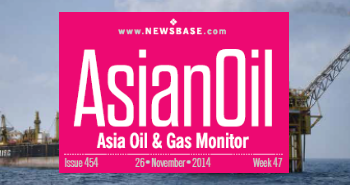AsianOil: Excelerate strikes deal with PetroVietnam on FSRU solutions
_5.jpg)
New York-listed Excelerate Energy has signed an agreement with Vietnam’s state oil and gas company PetroVietnam on exploring technical solutions involving floating storage regasification units (FSRUs) for importing LNG into the Asian country, the companies said on September 23.
Under the agreement, the pair will carry out feasibility studies to assess FSRU opportunities, with the aim of enhancing Vietnam's existing natural gas infrastructure. The partnership seeks to supplement domestic gas supplies with regasified LNG to meet the rising demand for natural gas and foster the development of a regional gas market.
"This agreement represents a key step in our cooperation with PTSC," said Steven Kobos, CEO of Excelerate Energy. "We are dedicated to working together to tackle Vietnam's energy challenges and contribute to the country's sustainable development."
The partnership aligns with Excelerate's broader strategy to expand its presence in Vietnam's growing LNG market. In June 2024, the company signed a term sheet with ITECO Joint Stock Company to co-develop a new LNG import terminal in Hai Phong.
The Northern Vietnam LNG Terminal (NVLT) is expected to have a total import capacity of 1.2mn tonnes per year, to be built in two phases. The first phase, with a capacity of 0.7mn tpy, is scheduled to begin operations in 2027.
Vietnam entered the LNG import market last year, with PV Gas commissioning the Thi Vai LNG terminal, which has an initial capacity of 1mn tpy. Its long-term energy strategy released last year envisages 11.4-13.2mn tpy of LNG imports by 2030, before dropping to 7.7-8.8mn tonnes in 2050 as more renewables are deployed.
The Thi Vai terminal’s capacity is set to be tripled to 3mn tpy after 2025. The first phase of 3.6mn tpy of the Son My LNG terminal is slated for competition in 2026-27.
Vietnam also expects to boost domestic production to 5.5-15.0bn cubic metres per year by 2030, from just over 8 bcm in 2022, according to state-owned PetroVietnam. The wide forecast is the result of uncertainty concerning two major gas developments, Block B and the Ca Voi Xanh. Block B’s target is to start production in 2027 and flow 6.4 bcm per year, while the goal at Ca Voi Xanh is to flow 7-9 bcm per year from 2030, contributing to reduced need for LNG during the next decade.
If you’d like to read more about the key events shaping Asia’s oil and gas sector then please click here for NewsBase’s AsianOil Monitor.


Follow us online